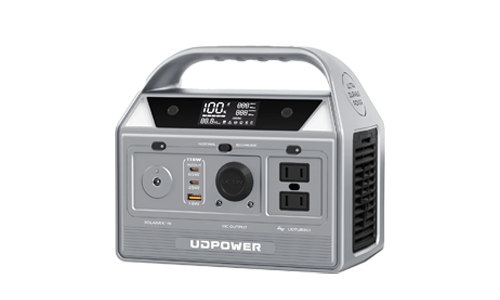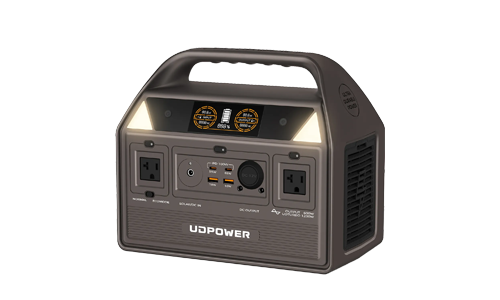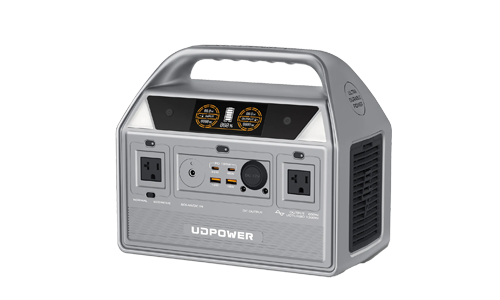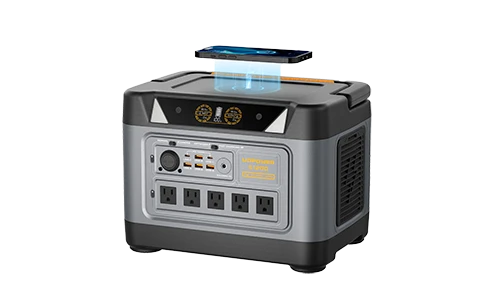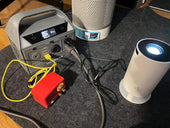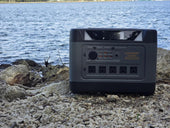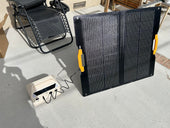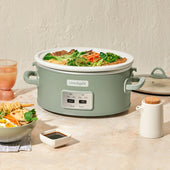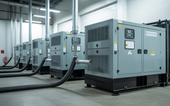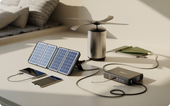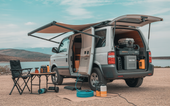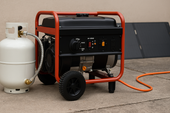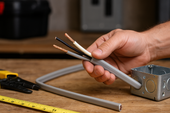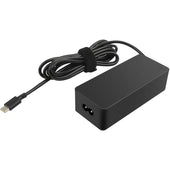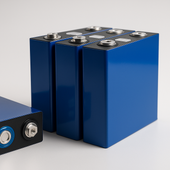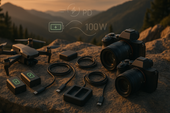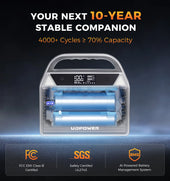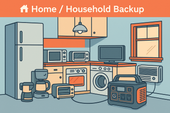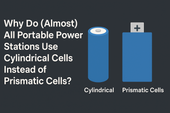Is It Worth Getting a Solar Generator?
ZacharyWilliamNot sure if a solar generator makes sense for you? This guide lays out the pros and cons, when it’s worth it (and not), who it fits best, and today’s budget tiers for U.S. buyers.

What a “solar generator” actually is
A solar generator is a portable power station—battery + inverter + battery management system—that you can charge from the wall, a vehicle, or solar panels. It’s fume-free and quiet, so you can safely power essentials indoors (Wi-Fi, laptops, CPAP, lights, mini-fridge) or off-grid at a campsite or in an RV.
Pros
- Indoor-safe & quiet: No combustion exhaust; fan-level noise only.
- Low maintenance: No fuel storage, no oil changes, no pull-start.
- Clean power: Pure sine wave AC is gentle on electronics and medical devices.
- Flexible charging: Fast wall charging at home, vehicle charging on the road, and solar for multi-day independence.
- Long cycle life (LiFePO₄): Thousands of cycles when used and stored properly.
Cons
- Up-front cost: Capacity and panels add up, especially above ~1 kWh.
- High-draw limits: Space heaters, hair dryers, large microwaves, and AC units can exceed inverter limits or drain batteries fast.
- Variable sun: Winter, clouds, shade, and poor tilt cut solar output; you may still rely on wall/vehicle charging.
- Not a whole-home solution: For multi-circuit, multi-day household loads, you’ll need a larger system or a fuel generator.
When it’s worth it
- Short–medium outages (hours to a couple days): Keep internet, phones, lights, a compact fridge, and CPAP running without fumes or noise.
- Apartment/condo living: Indoor-safe backup where fuel generators aren’t practical.
- Camping, tailgating, RV/van life: Quiet nights, solar top-ups by day; better experience than a loud engine.
- Medical backup: Models with fast UPS-style switchover help bridge brief power dips for sensitive devices.
- Mobile work: Clean AC for laptops, monitors, camera gear, and battery chargers.
When it’s not worth it
- Frequent multi-day winter outages with heavy loads: If sunlight is scarce and you must run heat or large appliances continuously, consider a fuel generator or installed storage.
- Whole-home backup including central HVAC: Most portables aren’t sized for that.
- Tiny needs on a tight budget: If you only need a few phone charges occasionally, a big power bank may suffice.
Who it’s for
- Renters or homeowners who want quiet, indoor-safe emergency power for essentials.
- Campers, overlanders, RVers, content creators, contractors with moderate loads.
- Anyone who values low-maintenance, clean power with optional solar independence.
Who it’s not for
- Homes expecting central AC/heat or multiple large appliances to run for days.
- Situations with zero charging access for many days plus uncertain sun.
- Users whose needs are already met by a small, inexpensive power bank.
Quick sizing & runtime math
Runtime: hours ≈ (battery_Wh × 0.85) ÷ device_watts (0.85 accounts for inverter/system losses).
- 600 Wh on a 60 W CPAP → ≈ (600×0.85)/60 ≈ 8.5 h.
- 1,190 Wh on a 100 W TV → ≈ (1190×0.85)/100 ≈ 10.1 h.
Daily solar: daily_Wh ≈ panel_watts × peak_sun_hours × 0.7 (the 0.7 factor covers angle/heat/wiring). If you need to recover ~700 Wh daily, a ~210 W panel with ~5 sun-hours can be enough.
Budget & price reference
Prices change with promotions and stock. Use this as a budgeting snapshot and check live product pages before purchasing.
| Model / Bundle | Capacity / Output | Approx. weight | Typical sale price (USD) | Use case |
|---|---|---|---|---|
| UDPOWER C200 (unit) | 192 Wh / 200 W | ~5.4 lb | $129.99 | Phones, cameras, light kits on a budget |
| UDPOWER C400 (unit) | 256 Wh / 400 W (800 W surge) | ~6.9 lb | From $169.99 | Light camping, short CPAP nights, laptops |
| UDPOWER C600 (unit) | 596 Wh / 600 W (1,200 W peak) | ~12.3 lb | $289.99 | Weekend trips, mini-fridge + lights + Wi-Fi |
| UDPOWER C600 + 120W panel ×1 | 596 Wh + 120 W solar | — | $439.99 | Starter “solar generator” kit |
| UDPOWER C600 + 120W panel ×2 | 596 Wh + 240 W solar | — | $589.99 | Faster daytime recovery |
| UDPOWER S1200 (unit) | ~1,190 Wh / 1,200 W (up to 1,800 W surge), fast UPS | ~26.0 lb | $379.99–$399.99 | Short outages, RV/van hub, multi-device setups |
| S1200 + 120W panel | 1,190 Wh + 120 W solar | — | $549.99 | Entry S1200 kit |
| S1200 + 210W panel | 1,190 Wh + 210 W solar | — | $669.99 | Quicker solar top-ups |
| S1200 + 240W panel | 1,190 Wh + 240 W solar | — | $699.99 | Balanced performance/value |
| S1200 + 420W panel | 1,190 Wh + 420 W solar | — | $899.99 | Fastest daytime recharge for this model |
| UDPOWER 120W foldable panel | Suitcase style | — | $189.99 | Budget solar top-ups |
| UDPOWER 210W foldable panel | High-efficiency, IP65 | — | $269.99 | Meaningful daily recovery |
Light recommendations
- Lowest budget: C200 for phones/lights; add a small panel later if desired.
- Weekend camping & CPAP: C400 if you travel light; C600 if you want longer runtime or a mini-fridge.
- Home/RV essential backup: S1200 for multi-device setups, quick AC charging, and fast UPS behavior for routers/PCs.
- Solar pairing: A 210 W panel delivers a meaningful daily recharge; two panels if you want faster recovery.
FAQ
Can a solar generator run a refrigerator?
Often yes. Many compact fridges draw ~100–200 W running but spike higher at startup. A 1,200 W inverter with ~1,800 W surge typically covers the spike; size battery capacity (Wh) to the hours you need.
Is it safe to use indoors?
Yes for battery units (they don’t emit carbon monoxide). Fuel generators must never be used indoors; they belong outside and far from doors and windows.
Do I need solar panels on day one?
No. Wall charging is fastest. Panels are valuable for multi-day trips or extending runtime during outages.
How loud is it?
Typically “fan-only” quiet under light/medium loads—far quieter than fuel engines.
Bottom line
If your goal is quiet, indoor-safe backup or off-grid power for essentials, a solar generator is usually worth it. Match battery capacity to your runtime, ensure the inverter covers your highest load, and add enough panel wattage to replace what you use each day.


